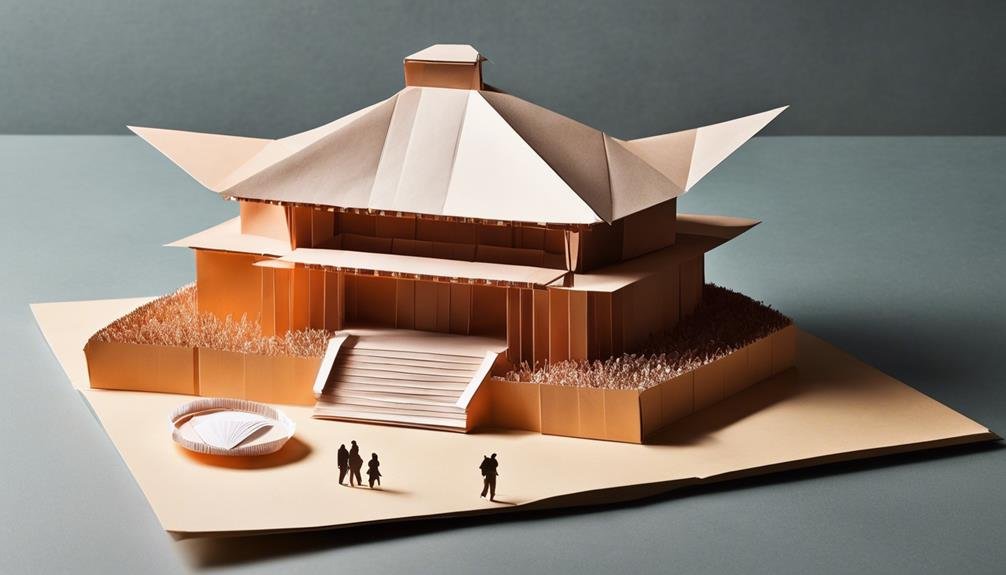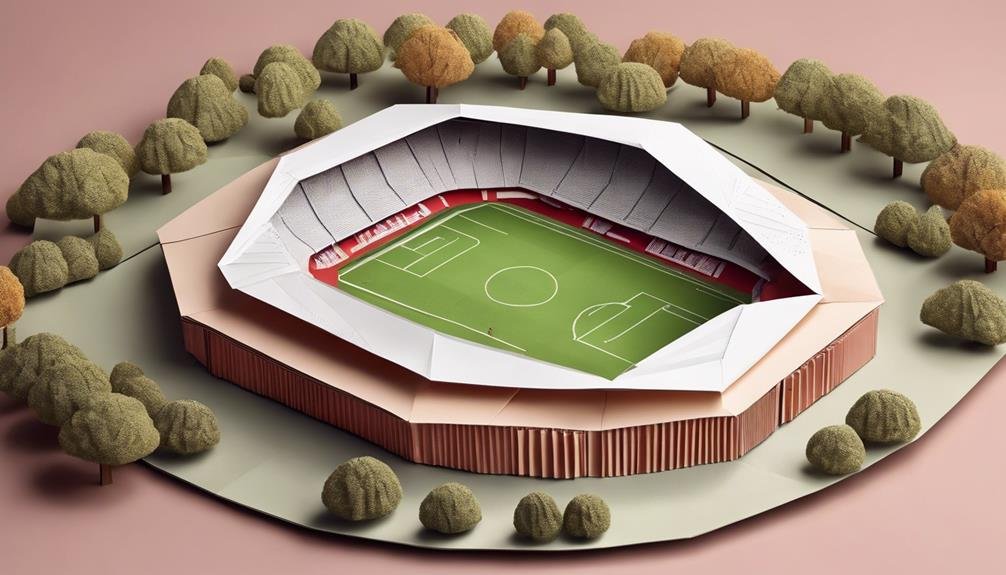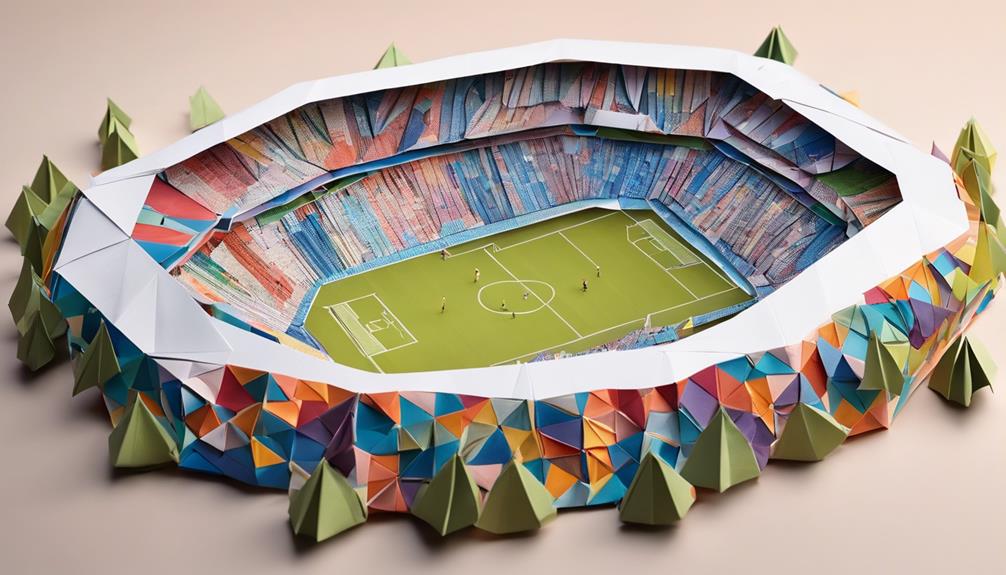The pros of building a new stadium are it stimulates the economy through job creation and enhances community unity. It also positions the city as a cultural landmark, attracting tourists and global recognition.
The cons of building a new stadium are the financial risks, including potential debt for taxpayers, and dubious economic benefits. Moreover, it often uses regressive taxes to subsidize wealthy entities, with minimal local economic impact.
Takeaways:
- New stadiums can stimulate local economies and create diverse job opportunities.
- Stadiums serve as cultural landmarks, enhancing community unity and global recognition.
- Building stadiums involves significant financial risks and potential taxpayer debt.
- Construction and operation may lead to increased traffic, noise, and environmental concerns.
| Pros of Building a New Stadium | Cons of Building a New Stadium |
|---|---|
| Economic stimulation | Financial risks |
| Cultural landmark | Poor economic impact |
| Infrastructure improvements | Subsidization of wealth |
| Global recognition | Gentrification and displacement |
| Increased property values | Limited use |
| Community engagement | Environmental concerns |
| Environmental innovations | Traffic congestion and parking |
| Sports development | Opportunity costs |
| Entertainment diversity | Long-term maintenance costs |
| Public-private partnerships | Community opposition |
Pros of Building a New Stadium
- Economic stimulation: Building a new stadium can serve as a catalyst for local economic development. It can generate temporary construction jobs and permanent positions once the stadium is operational, thereby reducing local unemployment rates. Additionally, the presence of a stadium can attract tourists and encourage the growth of nearby businesses, such as restaurants, hotels, and retail shops.
- Cultural landmark: A new stadium can become a significant cultural landmark, enhancing community pride and unity. It offers a venue for hosting large-scale events, including sports games, concerts, and cultural festivals, which can put the city on the map and boost global recognition. This can foster a stronger sense of community identity and belonging among residents.
- Infrastructure improvements: The construction of a new stadium often necessitates upgrades to local infrastructure, including roads, public transportation, and utilities. These improvements not only support the stadium’s operations but also benefit the surrounding community by enhancing accessibility and potentially increasing property values.
- Global recognition: Hosting events in a state-of-the-art stadium can attract international attention, placing the city in the global spotlight. This can lead to increased tourism, with visitors coming to attend events or simply to see the stadium, thereby injecting money into the local economy.
- Increased property values: The development of a new stadium can lead to increased property values in the surrounding area. This can benefit property owners by boosting their investment value, although it can also contribute to the area’s overall economic growth by increasing tax revenues.
- Community engagement: A stadium can serve as a hub for community engagement, offering a venue for local schools, charities, and non-profit organizations to host events. This can enhance the social fabric of the community by providing a shared space for communal activities.
- Environmental innovations: Modern stadiums are often designed with sustainability in mind, incorporating green technologies such as solar panels, rainwater harvesting systems, and energy-efficient lighting. This can contribute to the city’s environmental goals and serve as a model for sustainable development.
- Sports development: A new stadium can provide a home for local sports teams, fostering the development of sports at both the amateur and professional levels. This can encourage local youth participation in sports, promoting a healthier and more active community.
- Entertainment diversity: By providing a venue for a wide range of events, from sports to concerts and conventions, a new stadium can diversify the local entertainment options available to residents and visitors, enriching the cultural landscape of the city.
- Public-private partnerships: The construction of a new stadium often involves partnerships between the city and private entities, which can lead to innovative financing solutions and shared responsibility. This can mitigate some of the financial risks associated with such large projects and lead to more efficient project management.
Cons of Building a New Stadium
- Financial risks: Building a new stadium involves significant financial investment, often requiring substantial public funding through taxes or bonds. This can place a heavy burden on local taxpayers, especially if projected economic benefits do not materialize, leading to long-term financial obligations without the promised returns.
- Poor economic impact: Despite the potential for economic benefits, numerous studies have shown that stadiums often fail to deliver on these promises. The actual economic impact on local communities can be minimal, with benefits accruing primarily to team owners and other stakeholders rather than the broader population.
- Subsidization of wealth: The use of public funds to build stadiums has been criticized for subsidizing the wealth of team owners, players, and executives. This raises ethical concerns about the allocation of public resources, especially when those funds could be directed towards more pressing community needs such as education, healthcare, and infrastructure.
- Gentrification and displacement: The development of a new stadium can lead to gentrification in surrounding neighborhoods, driving up property values and living costs. This can displace long-time residents and small businesses, altering the character of the community and potentially leading to social and economic displacement.
- Limited use: Stadiums are often underutilized, hosting events only on a limited number of days each year. This can make it difficult to justify the large upfront investment and ongoing maintenance costs, especially when other community needs may be more pressing.
- Environmental concerns: Large-scale construction projects like stadiums can have significant environmental impacts, including habitat disruption, increased pollution, and the consumption of valuable green spaces. Even with efforts to incorporate sustainable practices, the net impact on the environment can still be negative.
- Traffic congestion and parking: The construction of a new stadium can exacerbate traffic congestion and parking problems, especially on event days. This can negatively affect the quality of life for local residents and hinder the accessibility of the area for emergency services.
- Opportunity costs: The funds allocated for stadium construction could be spent on other public services with potentially greater benefits for the community, such as schools, hospitals, and public transportation systems. This represents a significant opportunity cost, diverting resources away from other critical investments.
- Long-term maintenance costs: Beyond the initial construction costs, stadiums require ongoing maintenance and upgrades to remain competitive and functional. These costs can become a financial burden for the city, especially if the stadium fails to generate sufficient revenue to cover these expenses.
- Community opposition: The process of building a new stadium can spark significant community opposition, particularly when public funds are used. This can lead to public relations challenges and potentially derail the project, wasting time and resources while generating divisiveness within the community.
Sources:
- The Economics of Sports Stadiums: Does public financing of sports stadiums create local economic growth or just help billionaires improve their profit margin?
- Economics Of Subsidizing Sports Stadiums | St. Louis Fed
- So Your City Wants to Build a Stadium. Here’s What to Know.
Economic Impact
The construction of a new stadium often acts as a catalyst for economic growth, through avenues such as job creation, increased business activity, and enhancements to local infrastructure. Beyond the direct employment opportunities generated during the construction phase, the presence of a new stadium can significantly alter the economic landscape of its surrounding area.
Major events hosted at the stadium infuse the local economy with revenue through increased patronage of hotels, restaurants, and retail establishments, fostering an environment ripe for business growth and development.
Moreover, the vicinity of a new stadium typically sees a rise in property values, benefiting homeowners and attracting further investment into the area. This upsurge not only enriches the community’s economic vitality but also contributes to a broader tax base, facilitating improvements in public services and infrastructure.
Additionally, the development of new stadiums often necessitates infrastructure enhancements, including transportation upgrades and utility expansions, which serve to bolster the region’s overall economic development and improve urban areas. Consequently, while the financial impact of constructing a new stadium requires careful consideration of long-term sustainability, the potential benefits to economic growth and urban enhancement are substantial.
Job Creation

Initiating the construction of a new stadium sets the stage for a diverse array of job opportunities, spanning from the architectural planning phase through to the operational life of the facility. The creation of a new stadium is not just about erecting a structure; it’s a catalyst for employment across various sectors. From the initial blueprints to the final whistle of a game, the process involves a multitude of professionals and workers.
- Architects and Engineers: These professionals are at the forefront, transforming vision into viable designs, ensuring the stadium is both aesthetically pleasing and structurally sound.
- Construction Workers: A vast workforce is required for the physical building of the stadium, encompassing a wide range of skills from groundwork to high steel work.
- Stadium Staff: Once operational, the stadium becomes a source of employment for an array of roles, including maintenance, security, and customer service positions.
- Local Economy Boost: Infrastructure development and major events hosted at the stadium spur additional job creation within the community, from hospitality to retail.
The economic ripple effect of building a new stadium extends far beyond the construction phase, stimulating job growth and supporting the broader region’s economic health.
Community Spirit

While job creation significantly contributes to the local economy, the construction of a new stadium also plays a pivotal role in enhancing community spirit and pride. The establishment of such a venue provides a communal space where residents can gather to support their team, fostering a sense of unity and belonging. This shared enthusiasm for sports not only bolsters social cohesion but also revives the community spirit, strengthening the bonds among residents.
Moreover, a new stadium acts as a beacon, elevating the city’s reputation by showcasing its unique culture and attracting more visitors. This heightened visibility not only enhances the community identity but also brings national or international attention to the area, contributing to a collective sense of pride and recognition. The opportunity to host events and games becomes a source of communal joy and celebration, further embedding the stadium into the social fabric of the city.
In essence, the construction of a new stadium transcends its physical utility, becoming a symbol of communal pride and a catalyst for social cohesion. It nurtures a shared passion, uniting residents in support of their team and strengthening the community spirit.
Environmental Concerns

Acknowledging the significant benefits that come with the construction of new stadiums, it is essential to also consider the environmental challenges they pose, including habitat destruction and increased pollution. While these concerns are paramount, efforts are being made to mitigate such impacts through thoughtful planning and innovative design.
Modern stadium projects increasingly incorporate environmental considerations from the outset, aiming to achieve a balance between development and ecological preservation. These efforts include:
- Utilizing sustainable materials in construction to reduce waste and decrease the carbon footprint.
- Implementing green building practices that adhere to international standards, ensuring a minimal environmental impact during and after construction.
- Incorporating energy-efficient features such as LED lighting, solar panels, and water-saving systems to lessen the operational impact on the environment.
- Ensuring the ongoing maintenance of stadiums prioritizes sustainability, with measures to attract visitors and events that contribute positively to the local economy without compromising environmental integrity.
These initiatives demonstrate a growing commitment to integrating environmental stewardship into the heart of stadium development. By doing so, it is possible to enjoy the cultural and economic benefits these structures bring while minimizing their ecological footprint.
Financial Burdens

Despite the allure of new stadiums as landmarks and economic catalysts, the financial burdens they impose on communities cannot be overlooked, often translating into substantial taxpayer debt and resource reallocation from other critical areas. The construction of a new stadium can saddle taxpayers with a hefty bill, frequently surpassing the $1 billion mark. This substantial financial commitment often necessitates increased taxes and the diversion of funds from vital community projects, such as education, healthcare, and infrastructure improvements.
Moreover, the operational costs associated with maintaining a new stadium, including utilities, staffing, and routine maintenance, can further drain city budgets, leaving less room for other essential services. While private investments in stadium construction might seem to alleviate some of the financial pressures on the public, they rarely cover the full extent of costs involved, leading to prolonged financial difficulties for the community. Additionally, the financial venture into stadium construction is fraught with risks, including the possibilities of cost overruns, revenue shortfalls, and economic uncertainties, each of which can exacerbate the financial strain on local governments and their constituents.
Neighborhood Effects

How does the construction of a new stadium affect the surrounding neighborhood, and what are the immediate and long-term impacts on residents and local businesses? The development of a new sports or entertainment venue is a significant event that brings about a myriad of changes to its neighborhood. These changes can profoundly affect the daily lives of those living and working in the area, altering the landscape in both positive and negative ways.
The neighborhood effects can be summarized as follows:
- Increased traffic congestion and transportation challenges, making it difficult for residents to navigate their own neighborhood, especially on event days.
- A rise in property values near the stadium, which, while potentially beneficial for some homeowners, may lead to displacement due to higher rents and costs of living.
- Elevated noise levels during events, which can disrupt the peace and quiet of the neighborhood, affecting residents’ quality of life.
- Parking shortages resulting from the influx of visitors, creating competition for parking spaces and potentially limiting access for local residents.
These impacts highlight the complex nature of stadium development and its profound influence on the fabric of local communities.
Cultural Enhancements

New stadiums often emerge as pivotal cultural hubs, enriching local communities by serving as landmarks and venues for a diverse array of cultural and social events. These architectural marvels go beyond their primary purpose of hosting sports events, becoming symbols of city pride and repositories of local culture, heritage, and identity. Through their design and amenities, new stadiums reflect and showcase the unique character of their locales, embedding themselves into the cultural fabric of the city.
Moreover, by hosting a variety of cultural events, concerts, and festivals, stadiums enhance community engagement and provide spaces where diverse groups can come together to celebrate shared interests and experiences. This aspect of stadiums plays a crucial role in fostering a sense of unity and belonging among community members, further cementing the stadium’s status as a cultural landmark.
In addition to local benefits, iconic stadiums gain global recognition, attracting attention through media coverage. This international spotlight contributes positively to the city’s reputation, making the stadium not just a local cultural hub but a global one. Through these multifaceted cultural enhancements, new stadiums offer significant value beyond the realm of sports, enriching the cultural landscape of their communities.
Conclusion
In conclusion, the construction of a new stadium presents a complex array of socio-economic implications.
While it potentially drives economic growth, fosters job creation, and enhances community spirit and cultural vitality, it also poses significant environmental concerns, financial burdens on public resources, and impacts on local neighborhoods.
The decision to pursue such a project necessitates a careful evaluation of these factors to ensure that the benefits outweigh the costs and that community well-being is preserved and promoted.










